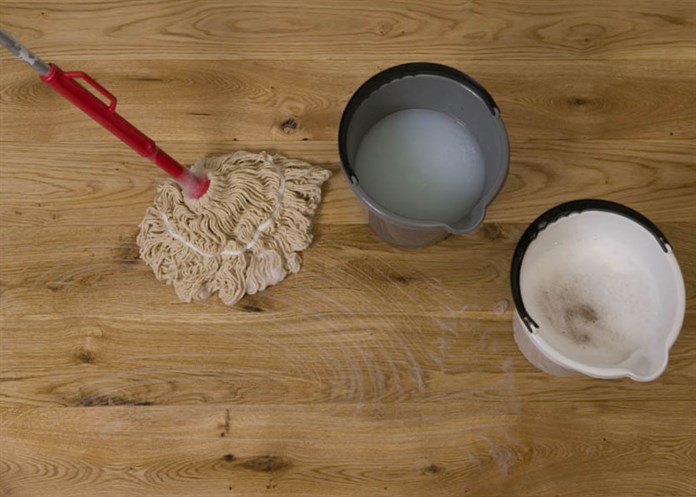How to maintain your wooden floors
When the wooden floor can no longer be maintained normally, it is time for sanding and new surface treatment. Read here how to do it and how to choose the right treatment for the floor - should it be varnish, oil or lye and soap?

Wooden floor treated with lye and soap
Wooden floors are not maintenance-free but can be sanded and surface treated. A wooden floor that has been treated with lye and soap is cleaned with ordinary soapy water. Two to four times a year, however, the floor must be washed more thoroughly than usual - preferably with very hot water and wood cleaner before soap treatment. This must be done to remove the dirt and grime that settles on the surface.
This is especially the case in walkways and other places where people move around a lot, e.g. around the dining table. In a wooden floor treated with lye and soap, scratches and impact marks can be removed, as the soapy water causes the wood to rise again so that the marks disappear. However, lye treatment is not suitable for dark, hardwoods.
Oil-treated wooden floor
An oil-treated wooden floor is cleaned with not too much water and a cleaning agent specially designed for the floor and is regularly treated with care oil. The oil treatment must be repeated approximately every two years if you want to avoid worn spots. Sanding may be necessary depending on how much wear the floor is exposed to. If you have small children and pets, the floor wears out somewhat faster than if the home is occupied by two adults.
It takes a few days to freshen up the oil treatment as you have to treat the floor a few times and the oil needs time to harden before you can walk on the floor again. The work with the oil treatment itself must take place with ventilation. Marks and scratches on an oil-treated floor can be removed by washing the newly planned floor with very hot water and wood cleaner. When the floor is dry, it can be oiled again.
Lacquered wooden floor
a lacquered wooden floor must be sanded and repainted approximately every five to ten years. It requires the room to be cleaned for a week, as the floor must first be sanded, then lacquered several times and finally hardened. On the other hand, the varnish is more durable than an oil treatment. Even if the floor is varnished, scratches and marks can still appear on it.
They cannot be removed again until the floor is sanded next time. It is not possible to patch a varnished floor without it being visible. Marks and scratches on a lacquered floor can be removed by washing the freshly planned floor with very hot water. When the floor is dry, it can be varnished again.
Preventive action.
maintenance if you spare your floor, i.e. have mats inside the doors, so that sand and other dirt are not dragged further into the house. Take off your shoes in the entrance hall instead of wearing out your floors with the sand and dirt that sits under your shoes.
It's also a good idea to make sure your furniture has "felt pads" under the legs so they can't scratch the floor when being moved. Loose carpets in places where the floors are worn a lot, e.g. where you move a lot can also counteract wear.
Tile and tiled floors, natural stone floors, laminate floors, linoleum floors and vinyl floors should be regularly treated with care products so that they retain the good properties of the surface so that the surfaces of materials retain the good properties.
The maintenance of a varnished wooden floor can be limited by varnishing it several times with a good durable varnish product and washing it with a maintenance care product. There are varnishes that can last up to 20 years.

Kilde: Bolius.dk

